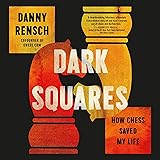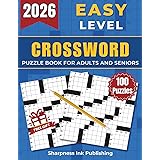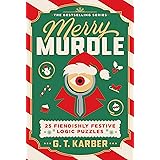Unearthing the Top 50 3DS Games: A Definitive Retrospective of Handheld Masterpieces
Do you remember that distinctive click of a Nintendo 3DS snapping open, promising hours of portable adventure? Many dedicated gamers recall the device as a vibrant hub of innovation and classic revivals. The video above offers a compelling rundown of the top 50 best 3DS games, meticulously ranked by their playscores.
This comprehensive playscore system averages both critic and gamer ratings, providing a robust metric for quality. It truly highlights the enduring legacy of the Nintendo 3DS, showcasing an unparalleled library of titles. Our deep dive explores the unique characteristics that made these games indispensable for any enthusiast of handheld gaming.
Defining Excellence: Understanding the 3DS Playscores
A “playscore” functions as a critical aggregate, distilling myriad opinions into a single, authoritative rating. This system offers a transparent and democratic approach to evaluating game quality. For the Nintendo 3DS, these scores illuminate the titles that resonated most profoundly with players and critics alike.
Considering 369 distinct releases, achieving a spot on this list signifies exceptional design and enduring appeal. The playscore reflects a game’s overall impact, influencing its perceived value within the vast 3DS ecosystem. Identifying the best 3DS games involves appreciating this collective assessment of excellence.
Exploring the 3DS Library: From Hidden Gems to Iconic Adventures
The Journey Begins: Playscores from 8.73 to 8.74
At a playscore of 8.73, Bravely Second: End Layer captivated JRPG aficionados with its strategic depth. This sequel masterfully built upon its predecessor’s unique Bravely and Default battle system. Players could store or sacrifice turns for explosive future actions, adding a tactical layer to every encounter. Imagine if every decision in combat significantly altered your next several moves; this dynamic system defined the experience.
Also scoring 8.73, Professor Layton vs. Phoenix Wright: Ace Attorney delivered a crossover event many thought impossible. It seamlessly blended Layton’s intricate puzzle-solving with Wright’s dramatic courtroom battles. The game offered a rich, voice-acted narrative, drawing players into a medieval mystery where logic and legal acumen were equally vital. This unique fusion produced a compelling dual-genre masterpiece for the console.
Poochy & Yoshi’s Woolly World, another 8.73 playscore entry, brought adorable platforming to the 3DS. This port of a Wii U original introduced Yoshi’s faithful companion, Poochy, enhancing the charming yarn-crafted world. The inclusion of a “Mellow Mode” made it incredibly accessible, demonstrating how quality platforming could appeal to all skill levels. Its vibrant visuals and engaging level design remained perfectly intact on the smaller screen.
For puzzle enthusiasts, Pushmo, with an 8.73 playscore, presented over 200 meticulously designed visual riddles. Players maneuvered blocks by pushing, pulling, and jumping to create pathways to rescue trapped children. The game’s intuitive mechanics and customizable map feature showcased a delightful blend of simplicity and intellectual challenge. Its undeniable originality secured its place among the best 3DS games.
Rune Factory 4 earned a playscore of 8.74, standing out as a premier simulation RPG. As an amnesiac prince, players managed a town, tilled fields, and embarked on grand adventures. The game’s unparalleled freedom allowed players to spend hundreds of hours crafting, collecting, and socializing. This Harvest Moon spin-off provided a refined RPG experience, cementing its reputation as a beloved title.
Closing this segment, Professor Layton and the Azran Legacy, also with an 8.74 playscore, served as a poignant farewell to the iconic detective. This installment skillfully wove together a captivating narrative, concluding the prequel trilogy with numerous mind-boggling conundrums. It solidified the series’ narrative threads, offering a satisfying resolution for long-time fans. The game’s storytelling prowess truly shone on the handheld platform.
Ascending the Ranks: Playscores from 8.75 to 8.80
With an 8.75 playscore, Etrian Odyssey 2 Untold: The Fafnir Knight revitalized a classic DS dungeon crawler. Atlus expertly remastered the original, adding a new story mode alongside the traditional exploration. The game challenged players to map intricate labyrinths with five distinct heroes, immersing them in a demanding yet rewarding experience. This remake successfully balanced nostalgic appeal with modern quality-of-life improvements.
Phoenix Wright: Ace Attorney – Spirit of Justice (8.76 playscore) continued the beloved legal drama with new mechanics and familiar faces. Phoenix Wright found himself defending a friend in a foreign land, grappling with a spiritual court system. The game introduced “Divination Seances,” allowing players to observe a victim’s final moments, adding a unique twist to investigations. Its well-crafted narrative and witty dialogue maintained the series’ high standards.
Capcom’s Resident Evil: Revelations achieved an 8.76 playscore, demonstrating the 3DS’s formidable graphical capabilities. This survival horror gem, set between main series installments, delivered a substantial 10-hour campaign. Jill Valentine and Chris Redfield navigated a terrifying cruise ship, engaging in tense combat and unraveling a sinister plot. It proved the 3DS could handle mature, atmospheric action with surprising fidelity.
Another Etrian Odyssey title, Etrian Odyssey IV: Legends of the Titan, secured an 8.76 playscore as the series’ 3DS debut. Players explored floating continents and mapped vast dungeons surrounding the World Tree Yggdrasil. The inclusion of a “Casual Mode” broadened its appeal, allowing even genre newcomers to customize their adventure. This entry skillfully balanced hardcore dungeon crawling with accessibility.
Sega’s classic arcade racer received a phenomenal 8.78 playscore with 3D Out Run. This 1986 Yu Suzuki masterpiece benefited from a spectacular 3D remaster, enhancing its iconic visuals and chill gameplay. New features like difficulty settings and car customizations modernized the experience without sacrificing its retro charm. Imagine cruising down scenic routes with enhanced depth; it was a pure dose of arcade nostalgia.
Picross 3D: Round 2, with an 8.78 playscore, offered a sophisticated evolution of the popular puzzle genre. Players chipped away at 3D blocks to reveal hidden objects, utilizing a dual-color scheme for increased complexity. Over 300 new puzzles challenged planning skills, making this sequel significantly more intricate than its predecessor. It proved the enduring appeal of nonogram puzzles in a three-dimensional space.
The ninja action of 3D Shinobi III: Return of the Ninja Master earned an 8.78 playscore, reviving a Sega Genesis classic. Joe Musashi’s acrobatic skills and devastating shurikens were brought to life with improved visuals and enhanced stage designs. This remaster underscored the timeless appeal of side-scrolling action. Players could experience classic ninja combat with a fresh, immersive perspective.
Persona Q: Shadow of the Labyrinth, an 8.79 playscore entry, ingeniously merged the Persona and Etrian Odyssey universes. Beloved characters from Persona 3 and 4 were chibi-fied and thrust into Etrian-style dungeon crawling. This spin-off provided a perfect balance of deep combat mechanics and engaging character interactions. It delighted fans by uniting two fan-favorite Atlus franchises in an unexpected way.
Phoenix Wright: Ace Attorney – Dual Destinies (8.79 playscore) continued Phoenix Wright’s narrative, introducing new psychic expert Athena Cykes. The trio of defense attorneys battled a legal system plagued by false evidence and accusations. This installment deepened the series’ themes of justice and friendship through interlocking narratives. It offered a thrilling blend of investigation and courtroom drama, keeping players on the edge of their seats.
Scoring 8.79, Shantae and the Pirate’s Curse showcased the belly-dancing genie in a Metroidvania-inspired adventure. Stripped of her genie powers, Shantae embraced pirate gear, navigating a gorgeous and humorous world alongside her archnemesis, Risky Boots. The game’s diverse cast and inventive level design made it a fitting build-up for future installments. It offered a refreshing take on the classic platforming formula.
Finally, the Phoenix Wright: Ace Attorney Trilogy, with an 8.80 playscore, presented the foundational cases of Phoenix Wright. This collection allowed players to revisit the rookie lawyer’s first three trials against his rival, Miles Edgeworth. While lacking later voice-overs, the strength of its classic cases and strong character development remained undeniable. It served as a crucial touchstone for the visual novel genre, cementing the series’ importance.
Mid-Tier Marvels: Playscores from 8.82 to 8.95
Treasure’s debut action game received a modern polish with 3D Gunstar Heroes, earning an 8.82 playscore. This side-scrolling shooter delivered satisfying run-and-gun gameplay, complete with explosive pixel art. The 3D port enhanced the already gorgeous visuals, making a difficult classic even more engaging. Its intricate move sets and challenging stages provided a demanding experience for shooting fans.
Kirby: Triple Deluxe, with an 8.83 playscore, brought the pink puffball’s 30th installment to the forefront. Kirby’s ability to copy enemy powers was supersized, adding over 20 new abilities including beetles and bells. The platforming gimmicks and four-player battles made this a hefty and smart addition to the series. It maintained Kirby’s signature charm while offering fresh content and exciting gameplay opportunities.
Shin Megami Tensei: Devil Survivor 2 Record Breaker achieved an 8.84 playscore by doubling the content of the original. This tactical RPG immersed players in a demon-infested, post-apocalyptic Japan, following a group of high school students. A new female character, full voice acting, and an additional scenario enriched an already monstrous title. It improved upon almost every aspect of its predecessor, delivering a truly expansive experience.
Scoring an 8.84, Rhythm Heaven Megamix offered a unique blend of challenging and relaxing rhythm-based gameplay. Players grooved through over 100 levels, many remixed from previous titles. Its story mode provided a charming narrative, while the “Perfect Campaign” tested players’ rhythmic precision. This game showcased the delightful versatility of rhythm mechanics, creating an addictive and memorable experience.
Fire Emblem Fates: Birthright garnered an 8.85 playscore, presenting one side of an epic tactical RPG conflict. This version offered a friendlier, more traditional Fire Emblem experience, focusing on protecting the Hoshido kingdom. It balanced effective strategy with charming dating-sim elements, allowing players to build bonds with a lovable cast. Birthright provided a compelling entry point for newcomers to the tactical series.
In Kirby: Planet Robobot, with an 8.88 playscore, the gluttonous pink ball received a mechanical upgrade. Kirby piloted a robotic armor, effortlessly differentiating this title from previous entries while remaining faithful to the series’ core gameplay. This fresh yet familiar title resonated strongly with both critics and gamers. Its innovative use of mech suits added a powerful new dimension to Kirby’s adventures.
Professor Layton and the Miracle Mask, an 8.89 playscore title, brought Level-5’s puzzle series to the 3DS with innovative twists. Utilizing the console’s stylus and 3D features, the game offered tricky yet rewarding conundrums. Professor Layton’s crime-solving activities felt fresh with these new hardware functionalities. It masterfully integrated the 3DS capabilities into its core gameplay, creating a more immersive experience.
Also with an 8.89 playscore, Shin Megami Tensei IV delved into a dark, combat-heavy narrative centered on a noble samurai. Though not directly connected to previous entries, it featured deep and unique components that enhanced the strategic combat. This tough, formidable title proved to be an awesome addition to the main series. Its focus on challenging battles and rich lore appealed to hardcore RPG fans.
Nintendo’s legendary bounty hunter returned with Metroid: Samus Returns, earning an 8.91 playscore. This reimagining of the 1991 Game Boy original introduced new 2D features like melee counter-attacks and free-angle firing. It modernized the Metroid concept while retaining the original’s exploration and atmosphere. The game provided a fresh direction for the Metroid series, perfectly blending old and new mechanics.
Dragon Quest VIII: Journey of the Cursed King achieved an 8.92 playscore, bringing a universally loved JRPG to the 3DS. This port of the PS2 classic allowed players to relive the family-friendly adventures of the hero and his companions. It was praised for its robust JRPG elements, compelling story, and memorable characters. The ability to experience such a grand adventure on a portable platform was truly remarkable.
Fire Emblem Fates: Conquest, another 8.92 playscore entry, offered a challenging counterpart to Birthright. This version embraced traditional Fire Emblem difficulty, forcing players to make difficult decisions in turn-based battles. Fighting alongside an adopted family provided a complex and morally gray narrative. It delivered the intense strategic depth that long-time fans cherished, solidifying its place among the best 3DS games.
Pokemon Omega Ruby, with an 8.95 playscore, provided an enhanced remake of the 2002 GBA RPG. Players returned to the Hoenn region, collecting Pokemon and challenging Gym Leaders with stunning 3D visuals. Borrowing elements from Pokemon X and Y, it offered a vibrant and familiar experience for fans. This remake successfully introduced new generations to a beloved region, showcasing its enduring appeal.
Kid Icarus: Uprising, also at an 8.95 playscore, revitalized a 1991 game as an on-rail shooter. Project Sora’s title immersed players in an enchanting Greek mythology tale with Pit embarking on an epic adventure. It featured epic bosses, local and online multiplayer, and showcased teamwork in cooperative matches. The game proved that on-rail shooters could still surprise and delight, providing a fast-paced, action-packed experience.
Before Monster Hunter World, Monster Hunter Generations scored an 8.95, rekindling the action RPG flame. This expanded version offered a nostalgic trip through the acclaimed franchise, introducing new features like playing as a Felyne. Its signature weapon system, with 14 unique gear types, allowed players to take down a massive roster of monsters. This title offered a comprehensive and exhilarating hunting experience.
Nearing Perfection: Playscores from 8.96 to 9.09
At 8.96 playscore, SteamWorld Heist transported players to a steampunk world populated by sentient automatons. Players commanded a band of mechanical pirates in dynamic, turn-based combat, ricocheting bullets off walls for strategic advantage. Its randomly generated ships and conniving villains ensured endless replayability. This unique side-scrolling shooter offered a refreshing tactical experience.
Super Smash Bros. for Nintendo 3DS, with an 8.96 playscore, brought the iconic fighting game to handhelds. It shared the core brawling experience with its Wii U counterpart, featuring a wide variety of Nintendo and third-party characters. New additions included 8-player support, Amiibo functionality, and Mii Fighters, expanding its appeal. This portable iteration proved the franchise’s versatility and enduring popularity.
Zero Escape: Virtue’s Last Reward, scoring 8.99, continued the success of its predecessor with a thrilling puzzle game. Players, as Sigma, were trapped in a mysterious room, forced to make life-or-death decisions in a Saw-like scenario. Its powerful storylines and 24 different endings ensured high replayability, satisfying players with every intricate playthrough. The narrative craftsmanship of this visual novel truly stood out.
3D Sonic The Hedgehog 2 achieved a 9.03 playscore, presenting a dashing 3D port of the classic Sega platformer. Sonic and Tails zoomed through seven classic zones, collecting coins and defeating Dr. Eggman’s badniks. The enhanced visuals and modern touches made this old classic accessible to new generations while catering to nostalgic fans. It delivered the same exhilarating speed and iconic level design, now with added depth.
Luigi stepped into the spotlight with Luigi’s Mansion: Dark Moon, earning a 9.05 playscore. This sequel to the acclaimed original saw Luigi exploring five abandoned mansions, capturing ghosts with his trusty Poltergust. The game boasted tons of content, offering more puzzles to solve and spectral adversaries to confront. Luigi’s paranormal escapades provided a charming and surprisingly robust adventure.
No Nintendo console list is complete without its acclaimed racer, and Mario Kart 7 sped in with a 9.06 playscore. This seventh edition introduced new characters and 32 diverse race tracks, including glider and underwater segments. The vicious competition and innovative track design kept players engaged for countless hours. It delivered the quintessential Mario Kart experience, polished for the 3DS hardware.
Monster Hunter 4 Ultimate, with a 9.07 playscore, represented the definitive Monster Hunter experience on the 3DS. This localized version of a Japanese exclusive elevated the series’ presentation, emphasizing unique weapons and diverse monster types. It allowed Western audiences to finally experience a massive and refined entry in the franchise. The game’s verticality and new combat styles were particularly praised.
Despite some graphical compromises, Xenoblade Chronicles 3D earned a 9.08 playscore for its impressive port of a Wii U epic. Players immersed themselves in a mesmerizing open world, undertaking quests and battling Mechons to fulfill their vengeance. The game retained enough core features to bring out its environmental charms and sprawling narrative. It was a remarkable achievement to bring such a vast RPG to a handheld console.
Sega’s side-scrolling brawler made a powerful return with 3D Streets of Rage 2, securing a 9.09 playscore. This polished remaster allowed players to relive their favorite fights with Axel, Blaze, and Max Thunder. Plowing through the city’s ruins with devastating attacks felt incredibly satisfying. The game preserved the classic beat ’em up action, enhanced by the 3DS’s visual capabilities.
The Elite Echelon: Playscores 9.10 and Above
Animal Crossing: New Leaf, with a 9.10 playscore, offered a fresh take on the simulation genre. Players became mayor, making decisions to build structures and design their town. This entry brought new content and convenient mechanics, revolutionizing the life simulation experience. Amiibo support further expanded possibilities, allowing new visitors and themed items to enrich the community.
The sunny Alola Region beckoned with Pokemon Sun and Moon, garnering playscores of 9.10 (Moon) and 9.07 (Sun). These titles introduced new starter Pokemon and legendary cover stars, continuing the monster-catching adventures. While sharing many similarities, exclusive Pokemon encouraged trading and exploration. They offered a vibrant, immersive universe for both veteran trainers and newcomers.
Journeying to the France-inspired Kalos, Pokemon X and Y achieved playscores of 9.14 (Y) and 9.10 (X). These sixth-generation entries introduced stunning 3D worlds and new legendary monsters like Xerneas and Yveltal. As the series’ best-selling installment, they delivered the same beloved Pokemon fun in a visually immersive universe. The transition to full 3D graphics was a significant leap for the franchise.
Bravely Default: Flying Fairy, with a 9.15 playscore, was hailed as a true Final Fantasy experience for a modern age. Square Enix injected a modern twist into the JRPG formula, refining its turn-based combat. The Bravely and Default system allowed for strategic accumulation and release of powerful attacks. It earned widespread praise for its innovative blend of traditional and new JRPG elements.
At a 9.15 playscore, Shovel Knight dug its way into gaming legend. This iconic side-scrolling platformer invigorated classic 8-bit energy with an enjoyable campaign and challenging DLCs. Yacht Club Games successfully bolstered the indie realm, proving that pixel art and engaging gameplay could captivate modern audiences. Fighting in the name of love across demented castles became an instant classic.
Super Mario 3D Land earned a 9.17 playscore, masterfully maximizing the 3DS’s signature 3D capabilities. Mario’s portable adventure was entirely playable without 3D, but depth enhancement significantly reduced frustration and boosted immersion. Featuring iconic characters, fun puzzles, and ever-present Bowser, it was perfect for Mario fans. The game demonstrated the creative potential of glasses-free 3D in platforming.
Fire Emblem Awakening, our victor for the best JRPGs on the 3DS, achieved an outstanding 9.27 playscore. Nobody anticipated such a surge in popularity for this tactical RPG series. Packed with lovable characters, streamlined controls, and fluid grid-based combat, it became a household staple. Venturing into a captivating tale set 2,000 years after the original, it redefined the series’ trajectory.
Link’s journey continued with The Legend of Zelda: A Link Between Worlds, securing an impressive 9.31 playscore. This title served as a brilliant tribute to the Super NES classic, Link to the Past, recalling beloved tropes while feeling entirely fresh. Its gorgeous 3D landscapes and seamless puzzles provided a new experience for fans. The game expertly balanced nostalgia with innovative mechanics, such as Link’s ability to merge into walls.
The experimental masterpiece, The Legend of Zelda: Majora’s Mask 3D, received a 9.37 playscore. This 3D remaster of the N64 classic allowed newcomers to discover one of the series’ most underrated titles. It faithfully translated all of its experimental quirks, including the harrowing three-day cycle, with slight but significant improvements. Showcasing the audacity of a classic to a new generation, it remains a unique and powerful entry.
Finally, with an unbeatable playscore of 9.51, The Legend of Zelda: Ocarina of Time 3D stands as the best 3DS game. This remaster of one of the most critically acclaimed video games ever made is a testament to the original’s enduring quality. The painting-like cartoon world, made even better with the console’s glasses-free 3D, created an unparalleled sense of wonder. This master-crafted adventure through a Ganondorf-controlled Hyrule remains the ultimate triumph on the 3DS.









